Puppy training classes sound like a great idea if you’re currently dealing with a challenging puppy!
Perhaps you’ve just brought home your adorable new puppy, and then, the typical stuff happens.

They pee on your carpet, and they start chewing on your shoes. Even their barking has become non-stop!
You have probably thought “Ahhhh! I really need to take my puppy to puppy training classes!”
But the question is, should you? The answer may surprise you.
Let’s learn below.
Key Takeaways
- Before enrolling your puppy to puppy training classes, it’s important to check the number of puppies enrolled, the training approach, and the health risks for your puppies.
- Puppies ages 8-16 weeks are the most receptive to training. Around this age, they are like a sponge absorbing all the information.
- Puppy training classes are ideal if you’re looking for a way to socialize your puppy.
TEACH YOUR PUPPY THE MOST IMPORTANT TRAINING FOUNDATIONS WITH THE PUPPY COACH™️!
Table of Contents
- Puppy Training Classes: Should You Enroll Your Puppy in One?
- The Cons of Puppy Training Classes
- The Pros of Puppy Training Classes
- Puppy Training Classes: Four Factors That Really Change Puppy Behavior
- The Best Age for Puppy Training Classes
- Puppy Training Classes: Make the Decision That’s Best For Your Puppy
Puppy Training Classes: Should You Enroll In One?
All dogs need some form of training in order to live happy, relaxed lives, but is Puppy School really the best answer?
As a top dog trainer, my answer is maybe. Why?
Although I believe that puppy training classes can help socialize dogs, and teach a couple of helpful things, I also know there are BIG risks involved.

There’s the risk of enrolling your puppy too early, getting a training method that doesn’t work for your pup, or having a training environment that doesn’t help at all.
Additionally, there are also some very important topics that puppy class may not be able to address. The training schedule can be so packed, it’s hard to track if your dog understands what is being taught.
These are just the tip of the iceberg. Let’s look at the pros and cons of puppy training classes, starting with the negatives…
The Cons of Puppy Training Classes
While sending your pup to a puppy school might sound like a responsible thing to do, there are drawbacks to some puppy training classes.
Here’s what you need to be careful about.
Con #1 – One-Time Fix Gimmick
Should you enroll your puppy to puppy training school? You can if you remember this: puppy owners should understand that not everything will be all good after just four weeks.

Training puppies requires setting the right foundation, establishing consistency and routine, and doing practice, practice, and more practice. You can’t always see progress because 4 weeks is too short to cram lessons in.
It’s so common and easy for people to think that because they went to puppy school they will have a great dog!
But, that is like thinking that because you take your kid to kindergarten for 4 weeks that he/she will be a great adult!
There is much more to dog training than completing a four-week puppy training course. Training puppies takes time and lots of practice.
Moreover, most serious canine behavioral issues do not occur till later on in life so won’t be able to address them during puppy school.
PUPPY COACH: THE BEST TRAINING TOOL IF YOU ARE TRAINING YOUNG PUPPIES!
The truth is that in order for a puppy training class to be effective, it has to put a solid foundation in place that’s designed to prevent issues down the road.

Unfortunately in my experience and having chatted to hundreds of puppy owners, it seems many classes struggle to provide this—as there is more focus on the promotion of dog food, vaccinations, worming, and other such items leaving little time for understanding the behavioral side of things.
What You Can Do Instead
If you’re unsure of what kind of foundation your puppy needs, I suggest you start with my Puppy Coach training program.
This program includes the needed foundation for potty training, command training, and setting up the schedules for your pup.
Con #2 – Emphasis On Food Training Only
Many puppy training classes use things like clickers or food as their primary training method.
Whilst I have nothing against food-based motivation, I think it’s important for new puppy owners to understand that there is more to training that just the click and treat sequence.
While these items can certainly be helpful aids, it’s not a good idea to rely on them 100% in order to get your puppy to listen to you.

The reason being is that it works for dogs who are totally food motivated and interested in little else, not easy going pups and often works only when the pups are young.
However long term, there needs to be a more substantial strategy.
It’s no different to raising kids—if all it took was a bag full of lollies then every parent would be laughing.
However as we all know, it’s not as simple as a lolly every time your child does something good. Eventually the lollies have to come to an end…and then what?
What You Can Do Instead
As a dog trainer that has handled over 88,000 dogs, I really believe that THE RIGHT food training is the foundation of effective puppy training!
For dogs, food is everything — their lifeline, their reason for survival.

Dog owners must see that food training GOES BEYOND rewards or positive reinforcement. Food has the power to transform a stressed and restless puppy to one that listens to you.
In fact, food training is part of Doggy Dan’s 5 Golden Rules, so it’s important to get it right.
Before enrolling in a puppy class, you can learn how to use food training more effectively with my Dog Calming Code™️ program.
Con #3 – Some Classes Have a Bad Mix of Puppies
First, let me remind you that in my opinion there is NO such thing as a bad dog.
Now that that’s clear, it’s important to understand that there IS such a thing as a bad mix of puppies in a puppy class!

Let me clarify: dogs are much like kids in a sense.
Think about a kindergarten classroom. There’s often a shy kid, a hyper kid, a bully, and a brown noser! There’s also a kid who eats the glue, and hopefully a bunch of chilled out balanced kids.
And with all those personalities things can become distracting in a room, especially if you have more than one of the extreme personalities.
BEFORE ENROLLING IN PUPPY TRAINING CLASSES, TRY THE PUPPY COACH PROGRAM!
For example, any kid—even the most well-behaved child—is probably going to have a hard time focusing when the hyper kid in the room is climbing up the walls and throwing their toys. Put 3 hyperactive kids altogether and things can get really busy!
The same goes for dogs.
What You Can Do: Understand That Mixing Your Dog Can Have Disadvantages
You can’t pick what other pups will be put in the same puppy class as you. Additionally, depending on the size of the class (some schools allow up to 15 puppies), it can be a nightmare to get your dog to relax, focus, and listen.

When you get a confident 16 week old German Shepherd and a fearful 12 week old small breed dog in the same class you really need to know what you are doing to avoid scaring the smaller pup.
If you have a very skilled person running the class it can all work out well, however there is the risk that the person in charge is not aware of the pitfalls and a puppy gets scared.
FROM OBEDIENT PUPPIES TO CALMER DOGS: TRANSITION WITH THE DOG CALMING CODE
This is important to think about as you’re considering which puppy class to enroll your pup in. Do the people running them have the skills to balance out all the energy present… (And we haven’t even started talking about the owners who turn up!)
Con #4 – Puppy Classes Are Often Held in Confined Areas
It’s important that a training class has a safe, dedicated area for hosting training classes.
That being said, it’s equally as important to ensure that the space has ample room for your puppy to meander about in as you train.

Sadly, many box store training programs gate off a small section of space to host training classes.
When you have 5-10 pups in a room, there’s often not nearly enough space for those puppies to focus and learn anything.
What You Can Do
If you’re signing your puppy up for a training class, I recommend that you look for a facility that is entirely dedicated to training or one that has the space.
For older puppies, find a program that uses a park (not necessarily a busy dog park) or large outdoor area so there’s space for your pup to roam and relax.
PUPPY COACH: THE PROGRAM FOR TRAINING PUPPIES BETTER
Also opt for a class that talks about understanding the mix of puppies that turn up and if they are going to get on.
You also have to make sure you have an understanding of how many puppies will be present, and if the puppies are going to be allowed off leash and how it will be managed.
Con #5 – Potential to Contract Illnesses from Unvaccinated Puppies
Puppies are susceptible to many devastating illnesses due to weakened immune systems.
This is why vets recommend that puppies get put on a vaccination schedule and that they should be kept away from other puppies until they’ve received all their shots.

Unfortunately, there are some uneducated pet owners that don’t understand the importance of vaccines. If your puppy comes in contact with another sick puppy, you could have a lot of unexpected vet bills on your hand.
Regardless of whether you vaccinate or not, you need to think carefully about where your puppy goes when they are young and vulnerable.
DOG CALMING CODE: THE TRAINING PROGRAM TRUSTED BY THOUSANDS OF DOG OWNERS
Sometimes the worst place to take a young puppy is the dog park because that’s where the highest rate of all sorts of dog pee and poop is. By default, some of those dogs will have been vaccinated and others will not have.
What You Can Do
Before rushing off to the nearest park for your puppy training have a think about the risk of infection.
While deciding whether to enroll to puppy training classes or not, only socialize your pup with other dogs that you know have had their shots.
The Pros of Puppy Training Classes
While there are certainly concerns about putting your pup in puppy training classes, there are also many positives to giving a class a try.
Here are a few pros…
Pro #1 – Puppy Socialization
It is extremely important to socialize a puppy.
The reason: failure to properly socialize your dog when he’s young can lead to aggression issues or skittish tendencies toward other dogs in the future.

Sure, you can socialize your pup anywhere. But, what better place to socialize than in a setting with a group of playful pups just like your own?
This type of setting is generally less intimidating for your pup when it’s done well. Puppies have plenty of energy for running around and playing — it’s a win-win for everyone!
BECOME THE PACK LEADER THE DOGS CAN TRUST AND RESPECT. START NOW WITH THE DOG CALMING CODE.
Pro #2 – Puppy Parent Education
You might think puppy training classes are designed to train your dog. And, you’d be half right!

However, puppy training classes can also include training for puppy parents on important topics such as:
- Worming
- Flea/tick prevention
- Feeding
- Food education etc.
If you’re a new puppy parent—or it’s been a long time since you owned a dog—this type of educational training is invaluable, provided it’s done in a balanced way.
Pro #3 – Teach Your Puppy Basic Commands
Properly training your dog is so much more than simply teaching him basic commands like “sit” and “stay.”
That being said, it is still important that your dog knows how to follow basic commands.

A puppy training class is a great place to learn how to teach your dog the most basic skills, such as sitting on command.
WARNING: This type of basic training IS NOT a foundation for you to be able to teach your pup to listen to you and follow your lead long term.
Pro #4 – Meet Your Local Vet
Did you know that a lot of vet practices also offer puppy training resources?
If you can find a class offered through a vet in your town, it’s a win! It’s also like finding your partner to your puppy’s development and wellness.
I advise you to call around to local clinics in your area to see if they offer any training programs before you sign up for a class through a big box pet store.
Pro #5 – Make Connections with Other Dog Lovers
Having a community of other pet parents is a wonderful thing.
In fact, making connections with other dog lovers provides you with a community of people who can:
- Support you if you’re having an issue with your puppy.
- Provide you with company for doggy play dates or hikes.
- Exchange services such as dog sitting.
Your pup ends up with new friends and so do you—a win-win for everyone!
Pro #6 – Puppy Training Classes Are Cost Effective
If you’re looking to learn the basics, group puppy training classes can be much more affordable than hiring a private trainer to come to your home.
Now, I’m not saying that you shouldn’t still seek private training opportunities—especially if your pup has some behavioral issues.
But, to get yourself started and to help your puppy learn some basic training skills, enrolling in a puppy training class is both easy and affordable.
Puppy Training Classes: Four Factors That Really Change Puppy Behavior
I’ve had puppy owners come to me saying: “Doggy Dan, I’ve done everything I could for my puppy. Even puppy classes don’t work for him!”
I know where you’re coming from. You love your puppy, and you simply want their behavior to improve.
But this is important to remember, too: unless a trainer or a puppy training class understands that these factors are needed to change puppy behavior, nothing will happen.
Factor #1: Connection with the Trainer
Building a strong and positive bond with your puppy is the foundation for effective training.
A connection based on trust and respect creates a nurturing environment where puppies can understand why they need to do certain things (and why they should stop doing some!).

A good trainer knows how to establish this connection by using patience, consistency, and positive reinforcement techniques.
When your puppy feels safe and supported, they'll be more eager to learn and respond to your training efforts.
LEARN MORE WAYS TO TRAIN DOGS BETTER WITH THE DOG CALMING CODE!
Factor #2: Instructing Dogs in a Language They Understand
Puppies, like all dogs, have their own way of communicating. Training them in a way they understand makes puppy training more effective.
BIG puppy training tip: your puppy acts on instinct and follows what is natural to them. It’s important to understand this so you can know the best way to communicate with your pup.

If your puppy pees, that’s not to make you angry; they just empty on the spot they feel is best for peeing.
Instead of expecting them to comprehend ”Ahh, such a bad dog! Stop it!” good puppy owners communicate in a language that dogs understand. And this does not involve anger or raising your voice!
A simple tool such as positive reinforcement or timeout can get the point across.
By speaking their language, your puppies trust you more, and obey you better.
Factor #3: Following a Training Method That’s Natural to Dogs
Dogs have evolved with certain behavioral patterns that are deeply ingrained in their nature.
To bring out the best in your puppy, it's essential to utilize training methods that align with their instincts and natural tendencies.

Understanding dog psychology is crucial before starting puppy training classes. By deeply knowing why your puppy acts a certain way can help you know what the better training resources are.
Factor #4: A More Personalized Approach
Every puppy is unique, with distinct personalities, temperaments, and learning styles.
A one-size-fits-all approach to training (generally taught in puppy classes) may not yield the best results.
Instead, a more personalized approach that considers your puppy's specific needs, strengths, and weaknesses is likely to be far more effective.

A skilled trainer can assess your puppy's individual characteristics and tailor the training program accordingly.
This approach ensures that your puppy receives the attention and guidance they require to thrive in their training journey.
The Best Age for Puppy Training Classes
The best time to start training puppies is when they are between 8 and 16 weeks old.
At this age, they are like little sponges, eager to learn and explore new things. This early stage is crucial for their development because they are more open to new experiences.
During this time, it's essential to use positive training methods and introduce them to other dogs, animals, and different places.

This helps them build a strong foundation for their behavior and how they'll interact with the world as they grow up.
Training and socializing them early on can prevent behavior problems and create a happy and well-behaved furry friend for life.
Puppy Training Classes: Make the Decision That’s Best For Your Puppy
You’ve heard the pros and cons…now it’s up to YOU whether you think a puppy training class will be beneficial for your pup or not.
If you’re still on the fence whether or not to enroll in puppy classes, consider learning first with the Puppy Coach program. This program is packed with training lessons designed to be easy yet effective for your puppies.
And, if you’re in the market for a more extensive training program that will work for your dog long past puppyhood, I recommend you give The Dog Calming Code program a try.
You got this!

~ Doggy Dan 😄
Get the first dibs on updates on all things dog related—subscribe to our newsletter here:

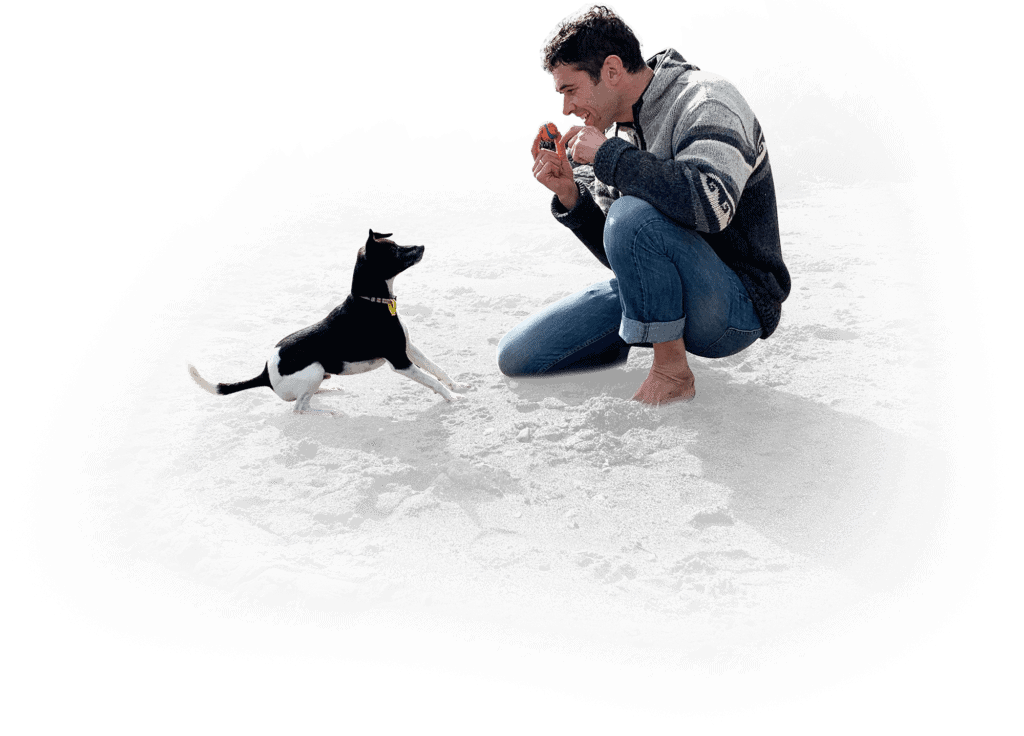
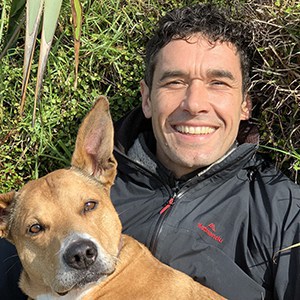

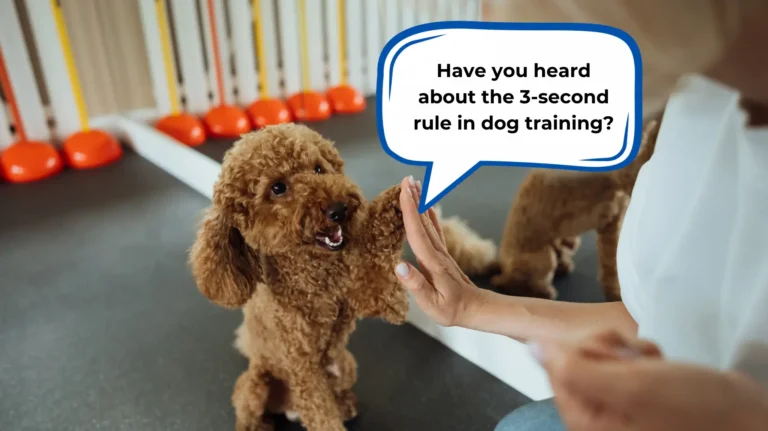
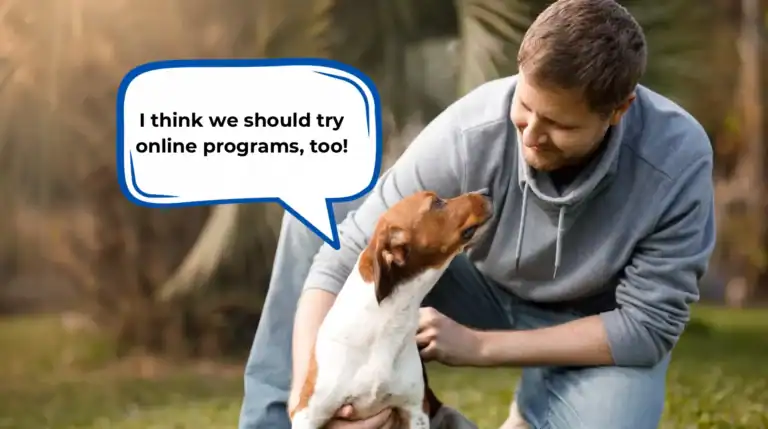
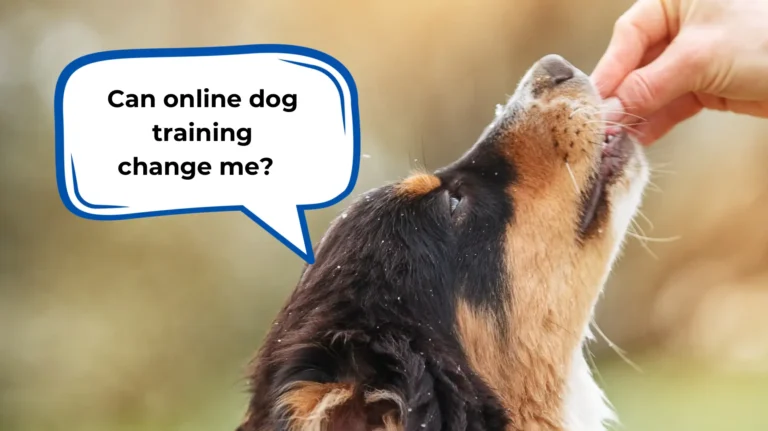
4 Responses
How do I get my dog to potty outside, previous owner used puppy pads? Help! 6mths old two pups.
Hi Christine, have you tried placing a soiled training pad out in the yard where you would like your puppies to potty? The key to successful toilet training is for you to be really proactive in taking your puppies out regularly, rather than waiting for them to let you know they need to go. Develop a really clear and consistent routine by using a command word and then praising your puppies when they get it right. Hope that helps…best, Doggy Dan
Keeping in contact with the local veterinary helps owners to make their pet for regular heath checkups and keeping in contact with other pet lovers can help owners while they have any issues related to their dog.
Keeping in contact with the local veterinary helps owners to make their pet for regular heath checkups and keeping in contact with other pet lovers help owners in different ways.